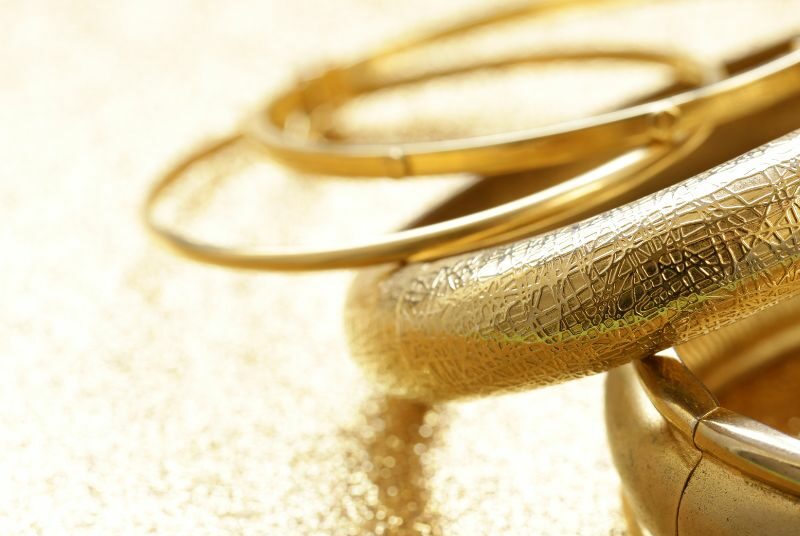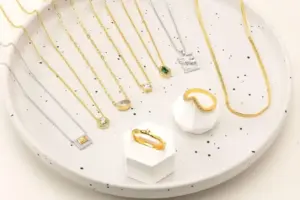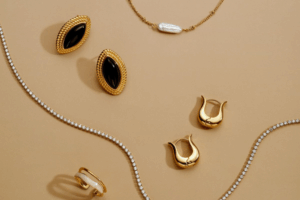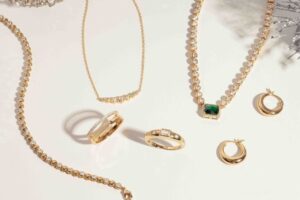Gold bonded jewelry is popular among jewelers and dealers for its richness, durability, and affordability. While there are other options like gold plating, vermeil, and gold-filled, they have benefits for varied purposes and budgets. This article explores gold-bonded jewelry, its durability, a close comparison of gold bonded vs gold plated, and why it’s a premium jewelry option.
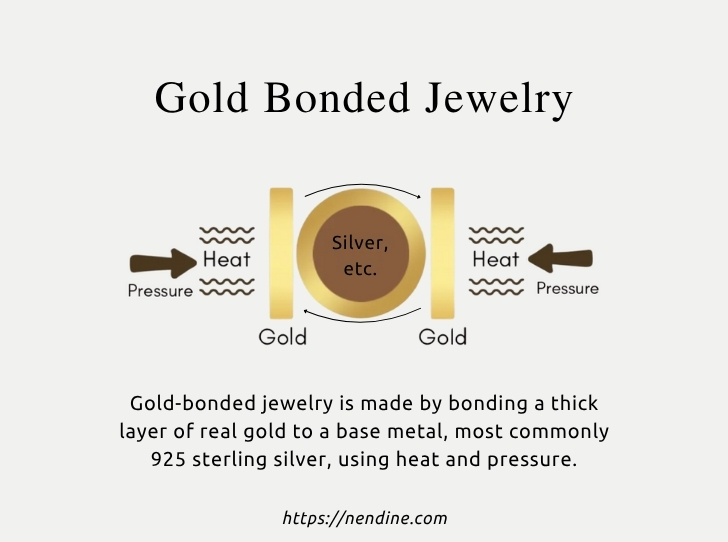
What is Gold-Bonded Jewelry?
Gold-bonded jewelry is made by bonding a thick layer of real gold (at least 5% of the item’s total weight) to a base metal, most commonly 925 sterling silver, using heat and pressure. For consumers who seek great jewelry without the cost of real gold, it presents a beautiful look and long-lasting quality. This jewelry type is between the value and lastability of electroplated and actual gold pieces.
How is Gold-Bonded Jewelry Made?
What exactly does bonded gold mean? To answer that, we should know how it is made. Heat and high pressure are used to bond the gold covering to a base metal, creating gold-bonded jewelry. Base metal is generally 925 sterling silver. The gold layer must be at least 5% of the entire weight to be gold-bonded. This method bonds better than gold plating, resulting in better resistance against wear and tarnish.
Key Characteristics of Gold-Bonded Jewelry
- Thicker Gold Layer: Gold-bonded items have a far thicker gold covering than plated jewelry, which provides a more luxurious feel and durability.
- Durability and Strength: The bonding technique guarantees that the gold stays tightly to the base metal, therefore resisting fading, chipping, and tarnishing.
- Hypoallergenic: Gold-bonded jewelry is a good choice for consumers with sensitive skin, as its foundation is sterling silver, which is nickel free and is less likely to cause skin discomfort.
Why Choose Gold-Bonded Jewelry?
Is gold bonded jewelry worth anything? Definitely yes, gold-bonded jewelry balances cost and beauty. It looks and feels like real gold and lasts years with proper care, outlasting gold-plated alternatives. It offers jewelers and vendors a high-value product that appeals to consumers seeking durability and beauty on a budget.
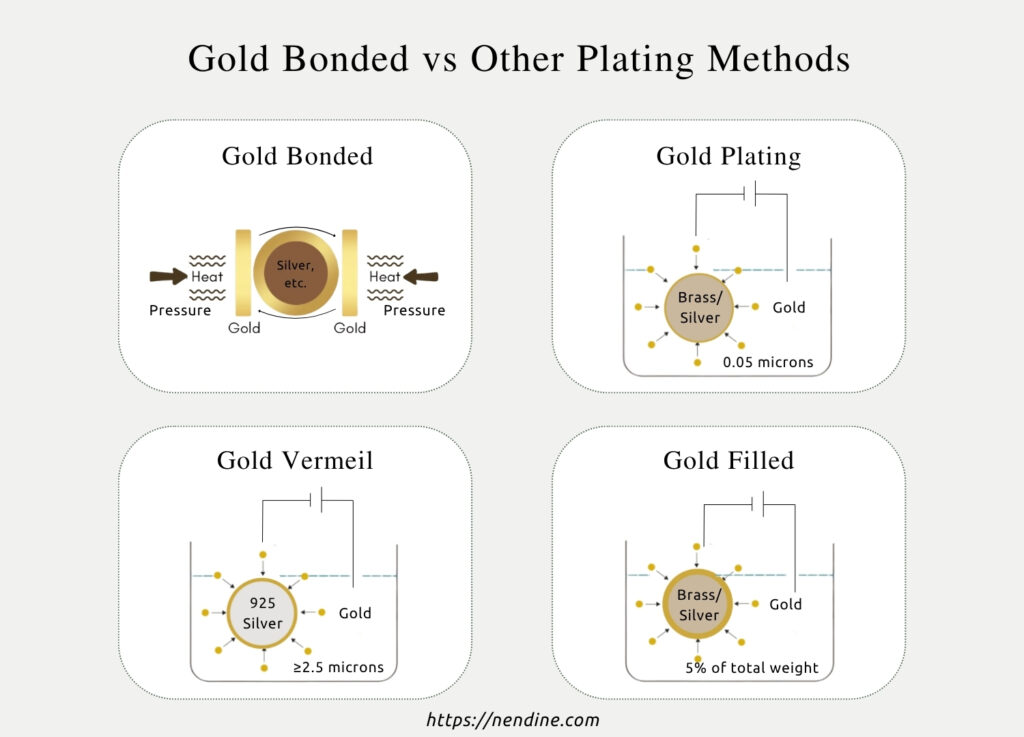
Gold Bonding vs Other Plating Methods
One of the numerous ways to get the appearance of gold without paying for actual gold is using gold-bonded jewelry. However, a custom jewelry manufacturer offers other methods for creating gold pieces, like gold plating, vermeil, and gold-filled jewelry. Each method varies greatly in terms of longevity, quality, and expense. Below is a breakdown of how gold bonded vs gold plated, vermeil, and gold filled options stack up—helping you choose the best fit for your target jewelry market.
Gold Plating
Is gold bonded the same as gold plated? Not quite. Gold plating is the most common and affordable method of achieving a gold-like finish. It involves electroplating a very thin layer of gold—average 0.05 microns thick—onto a base metal such as brass, stainless steel, or silver.
When comparing gold bonded vs gold plated jewelry, gold bonded generally offers greater durability and a thicker gold layer. Plated jewelry’s far less than 1-micron thick gold covering makes it more likely to chip and fade with time.
Although gold plating looks great when new, it is not durable and may tarnish with regular wear or chemical contact with moisture. Gold-plated jewelry is an excellent fit for temporary usage or costume pieces but not best for long-term use.
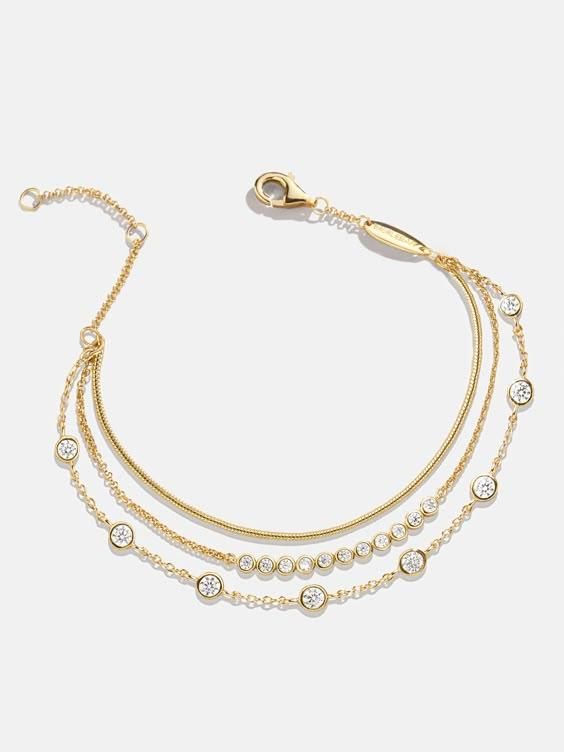
Gold Vermeil
Is gold vermeil the same as gold filled? No, they are not the same. The method uses a sterling silver foundation and a coating of pure gold electroplated. The gold layer must be at least 2.5 microns thick. This is thinner than the gold layer in bonded jewelry, even if it is thicker than common gold plating.
A gold vermeil jewelry manufacturer offers this for customers who want pieces that are durable and more valuable than electroplated ones.
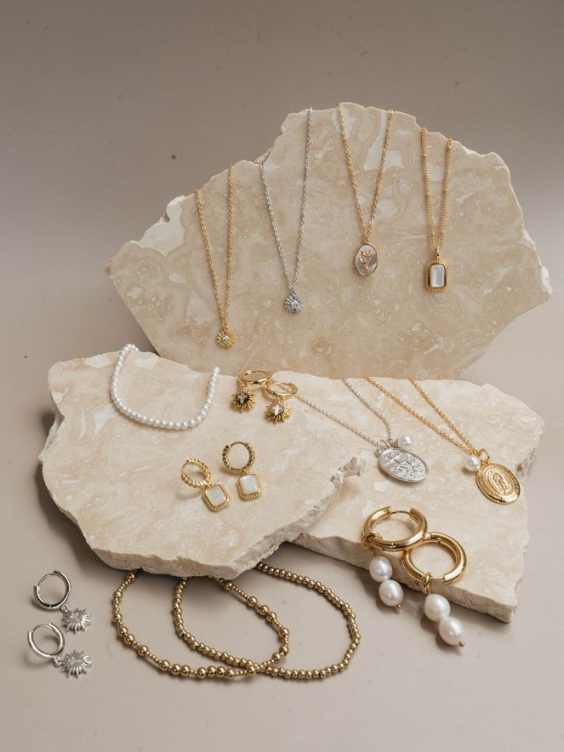
Gold Filled
Gold-filled jewelry is another variation that shows a thicker gold coating than gold plating and vermeil. This technique mechanically/chemically bonds a layer of gold to a base metal, like brass, and requires the gold content to be at least 5% of the overall weight of the work. Though the base metal in gold-filled items is usually brass rather than sterling silver, this is comparable to gold bonding.
Although with a brass base, gold-filled jewelry is more durable than plated or vermeil items.
A gold-filled jewelry manufacturer tends to attract markets who want pieces nearly as durable and resistant as actual gold ones but still affordable. This method can also help you attract that niche to your business thanks to the overall gold content.
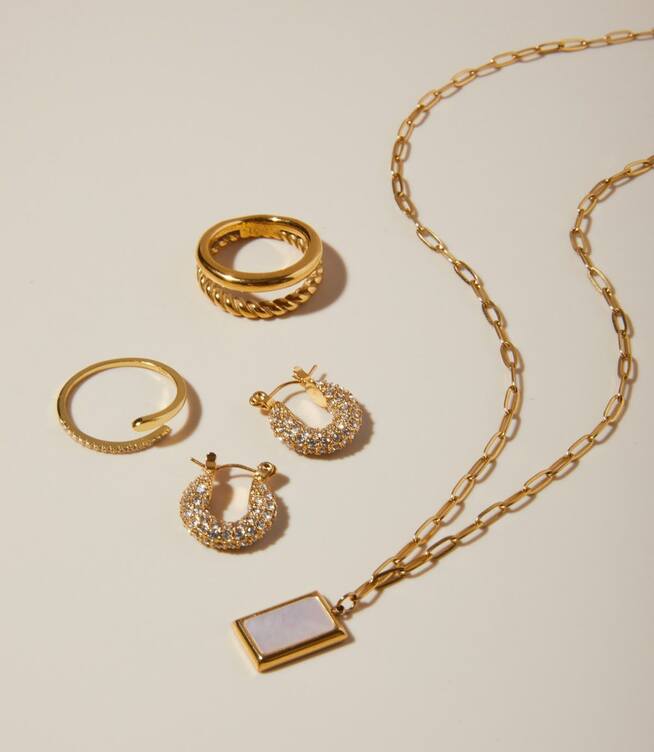
Does Gold Bonded Jewelry Tarnish?
Gold-bonded jewelry resists tarnishing due to its high-quality materials and strong bonding process. Electroplated pieces have a thin film of gold that peels off fast, whereas gold-bonded jewelry has a thicker layer of actual gold on sterling silver. The large layer keeps the gold coating intact and shiny for longer.
Like other jewelry, gold-bonded pieces are subject to time and weather. Without proper maintenance, minimal fading or tarnishing can occur over years.
In addition, strong chemicals, rough surfaces, perspiration, and friction accelerate this process. Regular soft cloth cleaning and storage in a dry, cold environment can increase jewelry life.
How Long Does Gold Bonded Jewelry Last?
There is a limit to how long gold-bonded jewelry can last. How long gold bonded lasts largely depend on the plating thickness. Well-maintained pieces can last up to years.
Proper maintenance can keep gold-bonded jewelry glossy and beautiful for years. It withstands water, sweat, and regular wear, unlike thinner gold-plated options that crack or fade in months. Gold-bonded jewelry lasts longer when cleaned with a soft cloth and kept away from abrasive surfaces.
No jewelry is damage-free, but gold-bonded pieces retain their shape and brilliance. The gold bonding process results in long-lasting, elegant pieces that combine price and quality. Proper maintenance assures these pieces’ long-term value to any collection.
Is Gold Bonded Real Gold?
Yes, gold-bonded jewelry does contain real gold. The outer layer is made of genuine gold bonded to a base metal, typically 925 sterling silver, using heat and pressure. While the entire piece isn’t solid gold, the visible surface is real gold, giving it the same luxurious look and feel at a lower cost.
Key Takeaway
Gold bonded jewelry offers a unique selection to jewelers who want a lineup that mixes elegance, durability, and value. With correct maintenance, its thick gold covering and sterling silver base offer a premium, hypoallergenic choice that lasts years. Gold bonding shows better resilience to wear, corrosion, and fading than gold-plated, vermeil, and gold-filled techniques.
